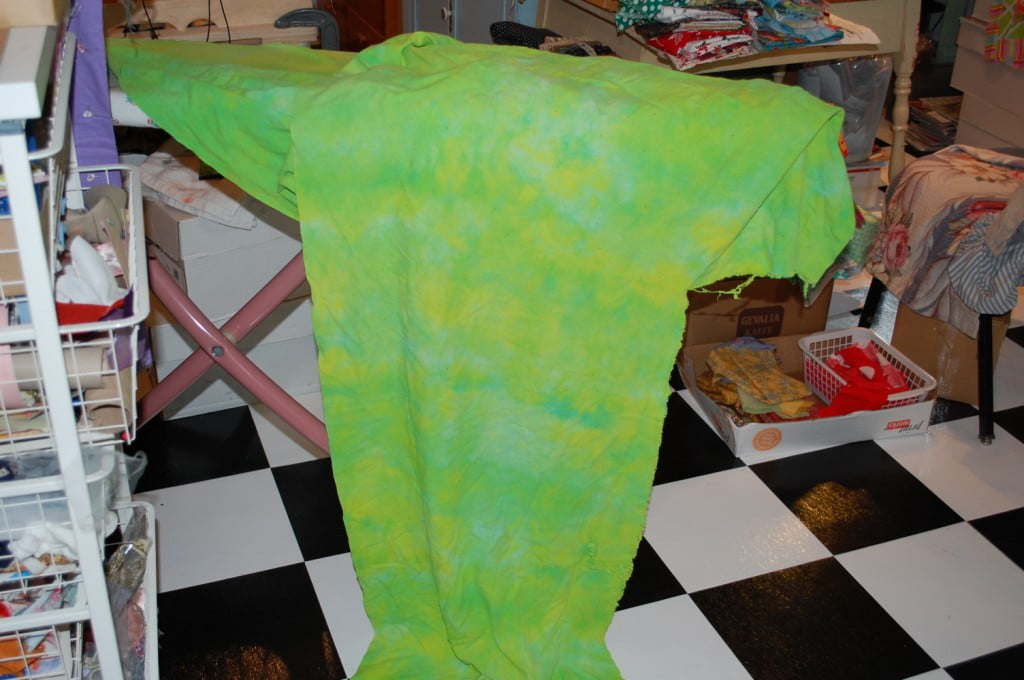 There are several ways to dye fabrics to a specific color for fabrics used for everything from household and personal garments to small business entrepreneurs that utilize textiles in their products.
There are several ways to dye fabrics to a specific color for fabrics used for everything from household and personal garments to small business entrepreneurs that utilize textiles in their products.
Dying fabrics has long been a way to bring new life to clothing or to create unique colors that set an entrepreneur's fabric-based products apart from the pack. Regardless of the use, both groups can easily get the right color when dying by following a few simple techniques.
Most commercial fabrics like cotton, linen, silk, wool and ramie will accept dyes quite readily, as will synthetic blends with rayon and nylon as long as the predominant fabric is 60 percent natural fabric like cotton. There are a number of textile blog sites for businesses and entrepreneurs that offer detailed instructions for testing the color fastness of various types of dyes such as Direct Dyes, Acid Dyes, Sulphur Dyes, Vat Dyes, and Reactive Dyes.
Methods of dyeing
Different garments and fabrics will take dye at different rates due to their fiber content and weight, so it is best to test a swatch with a dye test to gauge results. Essentially, there are natural dyes and chemical-based dyes that come premixed for use. There are a number of methods of applying dye to a fabric. Using natural dyes can be complex, so the art form often requires years of trial and error to perfect the technique. However, it can produce results that are different from most pre-dyed fabrics that are commercially available.
Most individuals and entrepreneurs are using the Vat Dyeing method which simply requires immersing the textile in a vat of water and dye mixture, which is then brought to a boil. The fabric is then allowed to sit and soak for hours or days with periodic agitation to ensure penetration of the dye.
Pre-mixed dyes come with instructions for use that often break down to a single package per three gallons of water for every pound of fabric to be dyed for the deepest colors.
Depending on the type of fabric and dyestuff used, certain salts or acids may be added to help absorption of the dye.
Fabrics that contain two or more types of fabrics (non-blended) may pose more of a challenge since different fabrics absorb color at different rates. There are chemical compounds that can reduce the possibility of this challenge. Small businesses that work with textiles in their products can find a number of textile dying websites that provide tips and instructions for natural dying of textiles for small business entrepreneurs. Some of these sites provide detailed equipment needs as well as process instructions for fixing natural dyes to the fibers of textiles to avoid fading or bleeding.
Obtaining the right color
For more intense colors when dyeing fabrics containing cotton, rayon, ramie, or linen, experts recommend adding a cup of salt to the dye bath. Many pre-mixed dye manufacturers recommend adding ½ cup of white vinegar when dyeing nylon, silk and wool. Waiting five minutes to put the salt or vinegar into the dye bath will help promote more even dying. A single tablespoon of laundry detergent can also be used in the dye bath to promote color fastness. In each case, be sure not to exceed water temperature of 180º F, allow the fabric to cool after removing from the dye bath, and then rinse in cool water.
In order to obtain an unusual color or shade, two or more dyes can be mixed or the fabric can be immersed in separate dye baths with different colors. It is possible to use one, two, three or as many colors as an individual desires on a single garment. However, when using more than one color, it’s usually best to start with the lightest color. There are several dying processes that involve the use of wax to keep the dye from penetrating certain areas of the fabric such as Batik and Tie-dying, which can produce an unusual and one-of-a-kind effect.
Small business entrepreneurs that use textiles in their products may desire small or even great color shifts in their product line. On the other hand, some short run and most major manufacturers quite often utilize spectrophotometers to ensure that there is exact color matching from item to item.
Ultimately dying fabrics is an art form that can need some practice to get the best results. However, once the right color is obtained, it can bring new life to older garments and fabrics or provide a unique color characteristic to an entrepreneur's product for greater appeal.
E. Victor Brown is a freelance writer specializing in tools and technology that affect design ranging from selective colorization programs in the print and digital world to spectrophotometers such as the Konica Minolta 700D.







